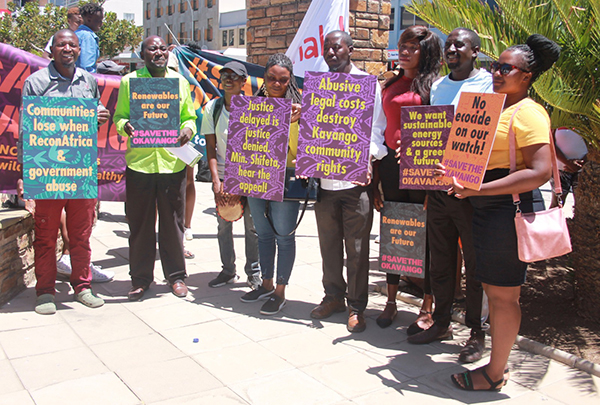KEETMANSHOOP – Environment, Tourism and Forestry Minister Pohamba Shifeta said Namibia’s community-based natural resource management is a unique programme that provides rural communities with incentives to sustainably manage their natural resources and further unlock enormous tourism development opportunities and benefits from the use of wildlife.
He said this during a Wildlife Conservancy Chairperson’s Forum in Keetmanshoop last Friday.
“Such interventions provide a dedicated platform to assess and review the achievements, challenges and opportunities faced by our communal conservancies,” he explained.
The minister added that their consistent and unequivocal belief is that there will be no successful wildlife conservation without the involvement of the local communities and an incentive mechanism to offset the cost of living with such wildlife.
He also said Namibia’s Community Based Natural Resource Management provides rural communities with incentives to manage their natural resources and further assistance.
“We positively identified good governance in all communal conservancies as one of the very important tools to community conservation successes in Namibia,” he said.
Shifeta also said, in light of the 2020/2021 years, testing the resilience of Namibians in every sector, the Covid-19 pandemic threatened the nation’s health, economy and social structures in many ways.
“Our economy has been subjected to unprecedented pressure, particularly in the tourism sector, as flight travel was suspended and lockdowns were imposed in many countries throughout the world – Namibia included,” he explained.
The minister added, that as a rescuing measure, the line ministry immediately recognised the threat this pandemic posed to the flagship Communities Based Natural Resource Management (CBNRM) programme, which relies heavily on photographic, tourism and conservation hunting to support operations and livelihoods.
“The MEFT and its partners responded by establishing the Conservation Relief, Recovery and Resilience Facility (CRRRF) to invite partners from all sectors within Namibia and internationally for assistance,” he said.
He said the ministry’s established support structures allowed for the rapid; yet, properly controlled disbursal of these funds to communal conservancies, community forests and the private sector in both tourism and hunting to receive much-needed support.
Explaining the roles of the conservancy committees elected according to their terms in power, he highlighted it to manage finances prudently and produce satisfactory annual financial reports, distribute benefits to the members as per the Benefit Distribution Plan and Procedures, and manage wildlife in accordance with the conservancy Game Management and Utilisation Plan.
The minister in conclusion thanked the chairpersons, managers and the entire communal conservancy membership for the excellent initiative in forming these institutions to uplift the living standards of communities.
Statistics indicated the programme has grown remarkably year on year since the gazetting of the first communal conservancy in 1998.
There are now 86 registered communal conservancies, 43 community forests and two community associations in Namibia.
It continued that, in 2020, the Directorate of Forestry was incorporated into the ministry; hence, the community forests chairpersons are represented in the chairpersons’ forums in the country.
The facility aims to provide relief to enable communal conservancies and community forests to pay salaries for game guards, forest monitors and staff to continue with wildlife monitoring activities, such as patrols, and anti-poaching and to respond to human wildlife conflict.
The facility further provides additional relief and recovery measures for CBNRM entities that are associated with tourism and nature-based enterprises.
To date, the facility has disbursed N$73 million as follows: N$44.7 million to communal conservancies and community forests, and N$ 28.3 million to tourism business support (lodges and campsites, SMEs, crafters, hunters and ensure the businesses continue to operate).
– sklukowski@nepc.com.na


